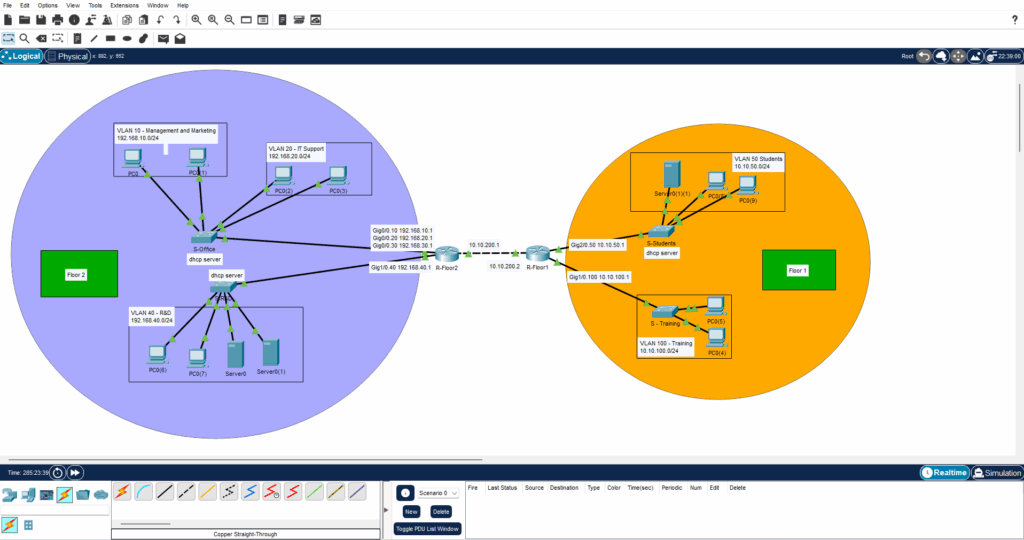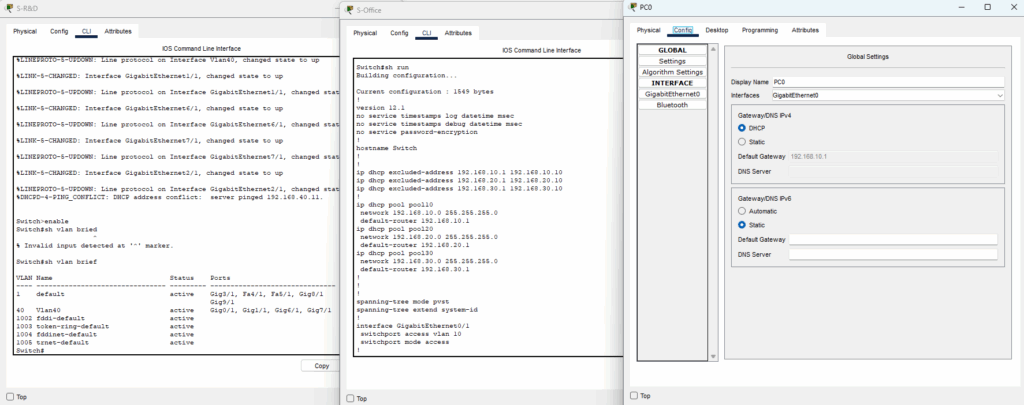I have been practicing using CISCO’s Packet Tracer for learning how networks function in practice.
To be able to learn I made up a situation and then tried to create a topology of the network based on the details I came up with. A quick explanation of the made-up situation:
The task is to create a network for a company that has two floors, tens of persons in each floor. This fictitious company has 4 departments. Each department is in it’s own VLAN.
With these details I ended-up making a topology like this:

Essentially, the upper floor and lower floor are divided based on external influence. Customer training sessions would be held on the lower floors for ease of access, and the Training department would be there as well to oversee everything. The upper floor would host the other three departments.
I have set it up so that each floor has a router, each router is connected to a switch and in each switch there are VLANs. All of the switches work as DHCP servers.
I used the RIP routing protocol between routers, and ACL in the routers for basic limitation of traffic between floors and different VLANs.
Here is a picture of the CLI of the switches and DHCP config on one of the PCs:

I’m planning to make a more in-depth blog of how to set up the system I did in the near future, as long as I have the time!
For those of you interested in learning the basics of Packet Tracer there are great online tutorials/courses on the matter provided by CISCO themselves for free. Here is a link to a main page. The courses should be easily found through it: https://www.netacad.com/cisco-packet-tracer
That’s all for now, thanks for reading!
Links:
Download CISCO packet tracer here: https://www.netacad.com/articles/news/download-cisco-packet-tracer